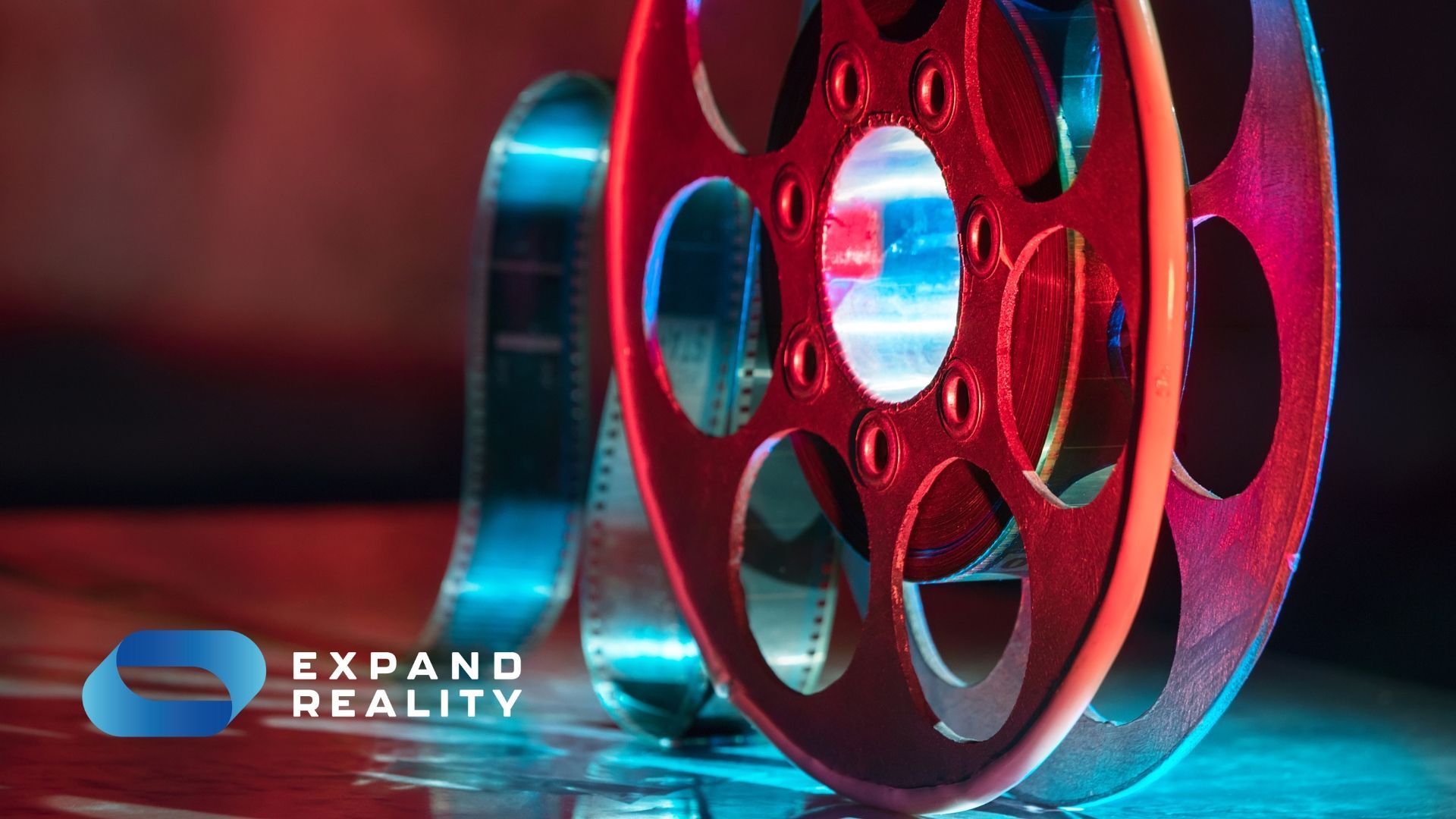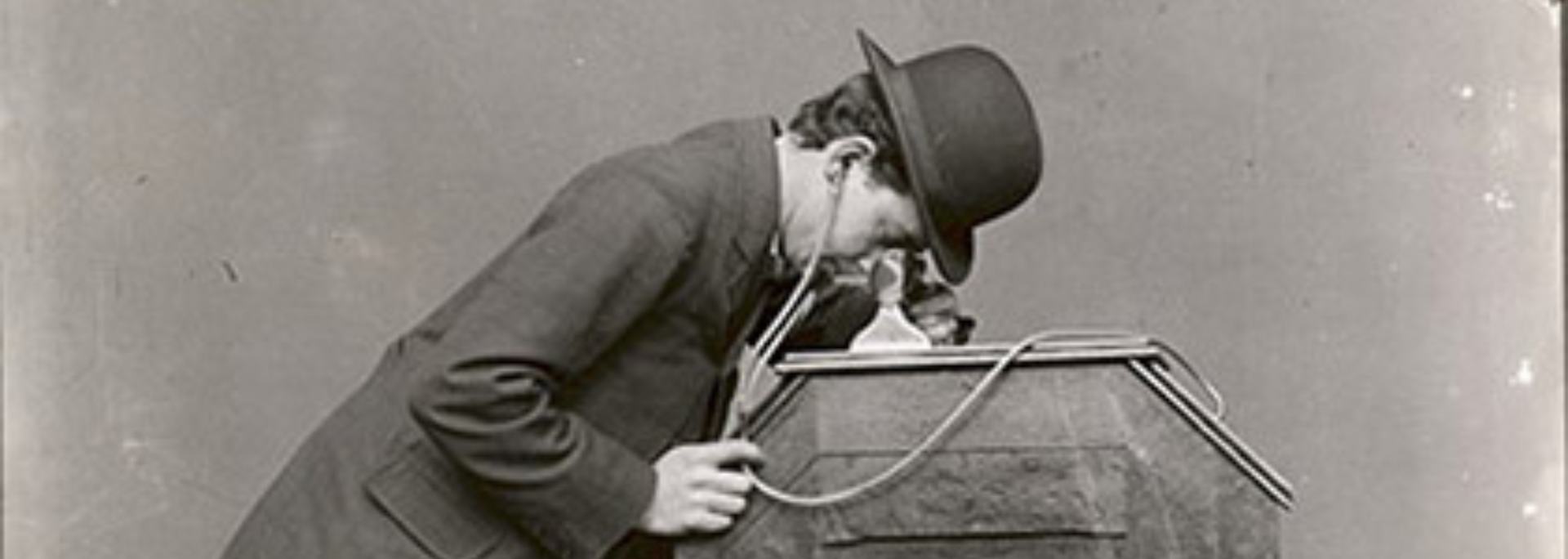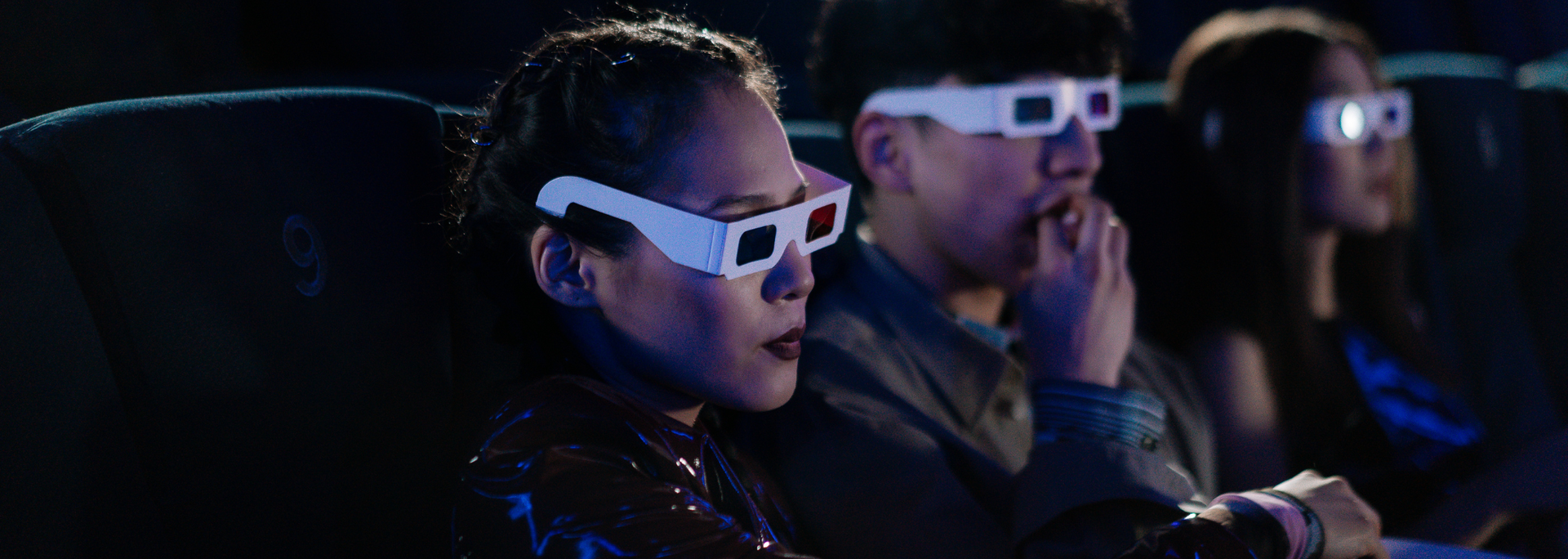hello@simplyvideo.io
Could XR spark a revolution in cinema?
Augmented reality glasses have the power to change the cinema-going experience as we know it. How? Read all about it in our handy 5-minute guide.

In 2011, an experiment performed by a scientist named David Neal gave away free popcorn in a cinema. The catch was this – half of the buckets of popcorn were stale. The results are unsurprising – most people still ate the stale popcorn.
Recently,
it's been pointed out that this experiment was highly flawed. The problem was this: when you go to the cinema, you don't have a lot of options. So when people are handed free popcorn, they're going to eat it because it's not like they have many other options anyway.
People love films. But they also love choices. How about a customisable, immersive experience powered by augmented reality (AR)?
Before we investigate how AR could spark a revolution in cinema, let's take a quick tour of how filmmakers have tried to make their films immersive in the past.
Sound
Cinema started in small booths that had
running reels with viewers for patrons to peep into. They were housed in parlours where music would also occasionally be playing. But the music was unconnected to the film being viewed.

Music began accompanying film when pictures moved to projectors displayed in large cinemas. And ever since, music has been used to immerse viewers in the film experience.
Sound can now sync up with movie reels, which first occurred thanks to the film
The Jazz Singer, released in 1927.
Now, movies are shown in surround sound, which enhances the experience of the cinephile with acoustic engineering – speaker placement and superimposed effects – to make the sound as realistic as possible.
3D glasses
Did you know that 3D predates sound synchronisation?
The first 3D device for cinema was completed in 1838. It used a complicated array of mirrors to transform visuals into what appeared to be a rudimentary hologram.
In 1922,
The Power of Love
utilised 3D glasses to give viewers an experience that helped them feel like the movie was popping out at them. 3D glasses work by shooting a film with two cameras and creating a pair of glasses that are designed to capture the projection of each camera through each respective lens.
In 1922, this was done using glasses that had a red-tinted lens and a green-tinted lens. The film was shot with two side-by-side cameras, one with a red filter and one with a green.

A special projector then shows a reel in which the two camera stills are overlaid, and can come into focus using the glasses. This creates the illusion of the image coming toward you.
Around 1950, glasses developers began using blue as opposed to red, along with blue camera filters, because the contrast between the speed of blue and the speed of red is greater, making for a starker effect.
Currently, 3D glasses used in IMAX cinemas are called
shutter glasses. Instead of red and blue filters, they use liquid crystal lenses to allow a specific polarisation of light to come through the lens.
Each lens (and camera filter) allows a different polarisation to get through. This, like the colour of light, is perceived as different distances by the brain, tricking you into believing that the image is three-dimensional.
Special chairs
Special seating to enhance the movie-going experience has been around since the 1830s. However, they've had a resurgence in the 2020s as films have been scrambling to offer an experience that could beat streaming services.
Some cinemas have been upping the ante by including seating that creates an immersive experience. Chairs have audio and vibration abilities to allow the user to feel like they're in the film itself.
Sensory cinemas
Sensory cinemas are also on the rise. These create a complete sensory experience for viewers – exactly how varies from venue to venue.
Peripheral cinemas in France, for instance, use multiple screens to simulate the experience of the viewer being surrounded.
Experiments abound, and cinemas like these have been around since the advent of acting itself. The question is, has this always been for a niche audience, or is it a part of a new movement?
The start of something new
We think a movement is starting. There are a couple of forces at work which indicate that cinemas are doing more than catering to niche audiences – and that immersive cinemas powered by AR may be the way of the future.
Current cinema practice indeed has a
plethora of complaints to contend with. Could a more interactive experience address these concerns?
One of the biggest complaints about going to the cinema relates to food and drink. Not only are these expensive, but you either have to miss some of the movie to get them, or arrive prohibitively early.

Viewers also complain about their inability to use their smartphones. Commonly, movie buffs at home like to look things up while they watch a film – something that many cinemas discourage.
Finally, cinemas make it hard to customise experiences, especially for those with small children who easily get distracted, or who have eyesight issues that make it difficult to get through a film.
Notably, one technology in particular could potentially address almost all of these concerns.
Glasses that can revolutionise cinema forever.
AR glasses, we believe, are the future of cinema.
What are AR glasses?
For those not in the know, AR glasses allow a wearer to have information and images projected onto their environment, and in many cases, also allow wearers to interact with and manipulate those images.
What could this look like for the cinema experience?
Food and drink
Many high-end cinemas have waiting staff. Cinemas could consider a delivery model as well. More people would likely come to the cinema if they didn't have to wait in a separate line for snacks, and it'd be quick and easy for parents bringing children along.
You might think this could be done with a small screen connected to the chair, or with a phone, but AR glasses would eliminate ambient light. You could simply use your AR glasses to order food while you watch a film.
Smartphones
AR glasses would allow you to look up facts during a film, similar to the smart technology Amazon uses in its streaming service.
Viewers could click a button and see,
without looking down at a phone, how much time is left in the movie, what the names of the actors on screen are, and where that particular scene was shot.
Customisation
Imagine if you had a small speaker next to your ear that you could adjust the volume on. Or change the brightness or aspect ratio of the movie while you're in the cinema. Or save a predetermined number of images or reels (pending copyright) onto your phone.
These are just some of the experiential possibilities when it comes to customisation through AR glasses.
And while the technology doesn't exist yet, you could potentially even decide whether to watch the movie in 3D. You'd just need options for glasses, some of which would have a lens overlaid blocking the polarisation of one of the film reels.
Conclusion
We believe AR immersion could be the future of cinema. As consumers increasingly desire convenience and customisability, and as cinemas' desire to compete with at-home entertainment increases, this technology may even save cinemas as we know them.
The only thing they can't do is make the popcorn less expensive.
Interested in purchasing an XR device? Expand Reality stocks leading-edge enterprise XR hardware such as the
RealWear HMT-1Z1,
Vuzix M4000 and
Magic Leap 2. Browse our
online store to get started.

Contact Us
Connect global teams. Collaborate with remote experts. Streamline processes and unlock cost savings with industry-ready extended reality technology.
Contact Info
hello@expandreality.io
Gemini Business Park
Sheepscar Way
Leeds
LS7 3JB
All Rights Reserved | Expand Reality







